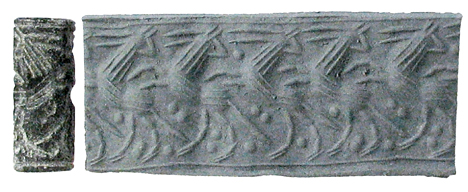Feb
13
2013

“Picasso did not paint for the eyes but for the gut. He painted for the gut that the eyes might be opened.”
One only has to compare a portrait of Picasso’s wife to that of one his lovers to prove that his strange perspective on reality worked from the inside out. What we feel as we observe his works is what he feels about his subjects as he paints them. The spirit and desire which animate man and beast not only move flesh but, in Picasso’s world, distort reality. Time and history without fail reveal the true character of objects, people and ideologies. A Picasso is often the exterior of a person or event shaped or distorted by the spirit and emotion within. It is a history in a single frame, an X ray that discovers not the bones but the heart. Emotional reality is revealed in shape and color. In these cases, his subjects are possibly “ethical nudes.”
This post has been slain and resurrected for inclusion in my 2015 book of essays, Inquietude.
Continue reading
Comments Off | tags: Culture, Numbers 5, Revelation, Temple | posted in Biblical Theology, The Last Days
Dec
18
2012

“They shall take up serpents…”
Thoughts on the Covenantal significance and serpentine nature of biblical “leprosy.”
[This post has been refined and included in Sweet Counsel: Essays to Brighten the Eyes.]
Continue reading
Comments Off | tags: Aaron, Acts, Baptism, Exodus, Kings, Leviticus, Miriam, Moses, Revelation | posted in Bible Matrix, Biblical Theology
Dec
11
2012
 “When Paul had gathered a bundle of sticks and put them on the fire, a viper came out because of the heat and fastened on his hand.” (Acts 28:3)
“When Paul had gathered a bundle of sticks and put them on the fire, a viper came out because of the heat and fastened on his hand.” (Acts 28:3)
One interesting facet of biblical symbols is their identification by “use” and “motion.” Objects that have no link in the natural order of things can be tied together through their use in a similar purpose in the work of the house of God. This is not entirely strange. Diverse things which have no relationship in the natural order are brought together by man for use in “housework.” For the Author of the Bible, nature is “plastic.” This factor is one reason why the Bible is strange to modern ears and minds.
[This post has been refined and included in Sweet Counsel: Essays to Brighten the Eyes.]
Continue reading
2 comments | tags: Exodus, Genesis, Isaiah, Jeremiah, Postmillennialism, Revelation, Revelation 20, Satan | posted in Biblical Theology, The Last Days
Dec
4
2012

Read a very helpful introduction to the reasons for a preterist interpretation of the Revelation by Msgr. Charles Pope. HT: Micah Martin.
Currently in the Liturgies of daily Mass we have been reading the Book of Revelation. It is commonly read at the end of the liturgical year, for it bespeaks the end of, and passing qualities of all things of this world.
Continue reading
1 comment | tags: Hermeneutics, Preterism, Revelation | posted in Biblical Theology, The Last Days
Oct
21
2012
“The Sabbatarian vision is too small. This is why Paul chides the Galatians for observing ‘days and months and seasons and years.’ The Sabbath, along with the Torah administration as a whole, belonged to the stoicheia, the “elements of the world,” the things that constituted the first creation.”
From Tim Gallant’s blog:
Continue reading
Comments Off | tags: Elijah, Galatians, James Jordan, John the Baptist, Matthew, Pharisees, Revelation, Ten Commandments, Tim Gallant | posted in Biblical Theology, Quotes, The Last Days
Sep
8
2012
or The Architecture of Abraham’s Bosom

“For just as Jonah was three days and three nights in the belly of the great fish, so will the Son of [Adam] be three days and three nights in the heart of the [Land].”
(Matthew 12:40)
There was some to and fro recently between Doug Wilson and Andrew Perriman on the use of Greek terms for the grave and hell used by the New Testament writers. [1] Each makes some very good points (I lean more towards Perriman), concerning “what lies beneath.” When Jesus speaks of a “divided hell,” should we be overly concerned about Greek mythology? It seems to me that those who focus on the references to pagan literature in the Bible fail to see the biblical sources of many things, even if these biblical things pick up Greek names along the way.
However, neither Wilson nor Perriman really deals with the architecture of God’s work in the world, which is what actually lies beneath. As with Shakespeare, an understanding of God’s “global theatre” enlightens us concerning the shape of His stories.
Continue reading
Comments Off | tags: Abraham, AD70, Baptism, Circumcision, Covenant Theology, Genesis, Melchizedek, Moses, Revelation, Solomon, Temple | posted in Bible Matrix, Biblical Theology, Creation, The Last Days
Aug
30
2012
Theandric Plenipotentiary Iteration
 “It takes on form like clay under a seal…” (Job 38:14)
“It takes on form like clay under a seal…” (Job 38:14)
Read The Secret before you read this post.
Typology is the science of recognizing the shape of one thing stamped upon, into, something else. In itself, this is not an exact science by any means, and is prone to abuse. Thankfully, the Bible doesn’t simply give us isolated “indentations”; it gives them to us in sequences. Sequences of ideas, like sequences of musical notes, are exact, even if our identification of them is not yet as refined as we would like.
[This post has been refined and included in Sweet Counsel: Essays to Brighten the Eyes.]
Continue reading
Comments Off | tags: Chiasm, Feasts, Genesis, Literary Structure, Mark Horne, Revelation | posted in Bible Matrix, Biblical Theology, Creation, The Last Days
Jul
5
2012
or The Undeserved Immunity of Devilish Talmudism

“For they bind heavy burdens, hard to bear, and lay them on men’s shoulders; but they themselves will not move them with one of their fingers.”
Matthew 23:4
One of the great benefits of understanding the “preteristic” nature of the New Testament is the way the many supposedly “generic” apostolic warnings in the epistles are suddenly grounded in their Jewish context. The destruction of the Temple barely gets a mention in any church today, yet when the letters of Paul, Peter, James and John are understood to be aimed at Jews outside the Church and Judaizers inside it, the New Testament doesn’t become less relevant to us, but more relevant.
Continue reading
1 comment | tags: AD70, Baptism, Federal Vision, Gnosticism, Luke, Martyrdom, Revelation, Talmud | posted in Biblical Theology, Ethics, Quotes, The Last Days
Jun
27
2012
or Music of the Spheres

Peter Leithart recently posted about ancient astronomy’s “lyre in the sky.”
According to ancient astronomy, the planets were in crystal spheres that formed a seven-stringed lyre in the sky. Moving from earth outward, the seven strings are: Moon, Mercury, Venus, Sun, Mars, Jupiter, Saturn. If you ascended from earth all the way up to the sphere of fixed stars, you’d pass through those seven spheres.
Continue reading
Comments Off | tags: James Jordan, Peter Leithart, Revelation | posted in Bible Matrix, Biblical Theology, Quotes

































